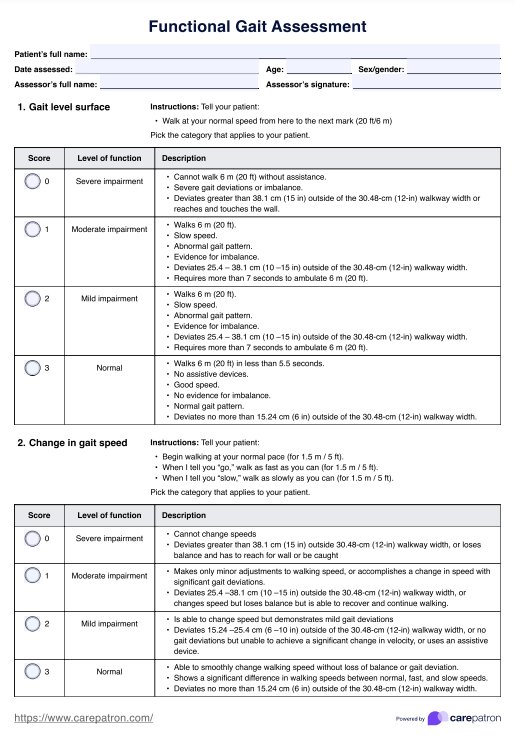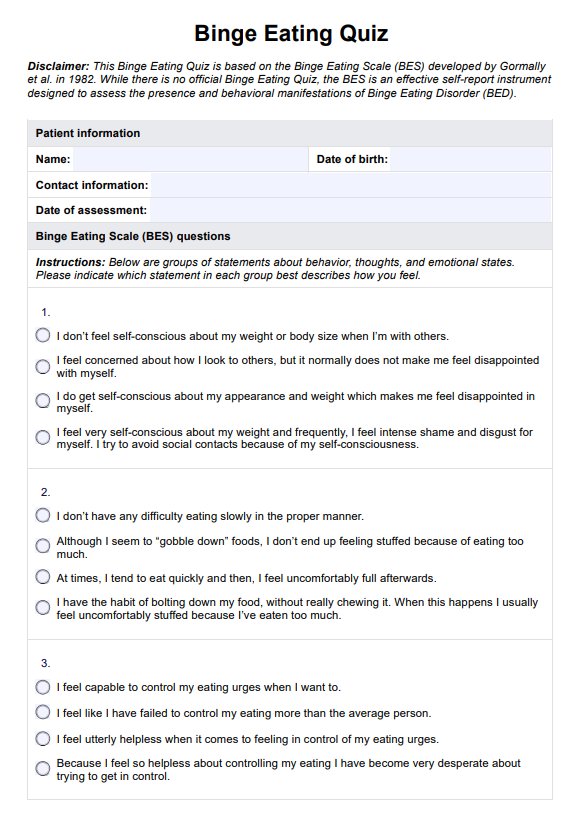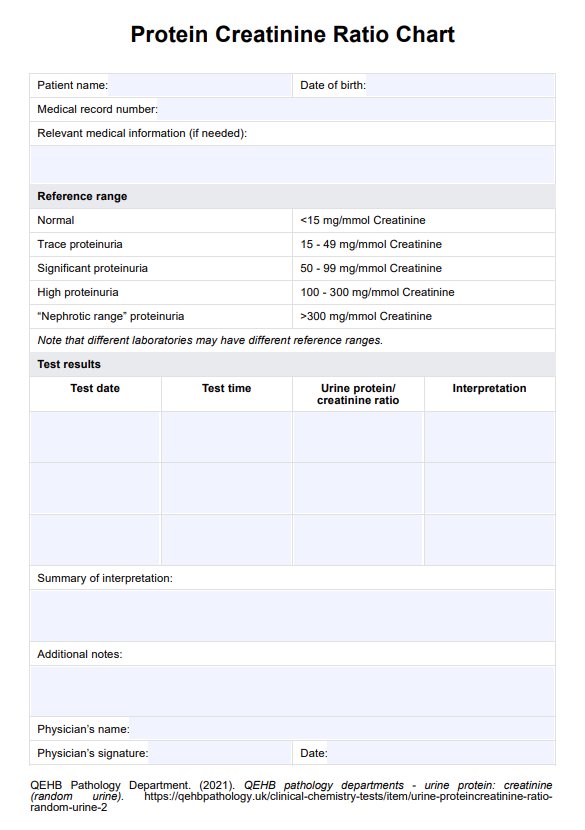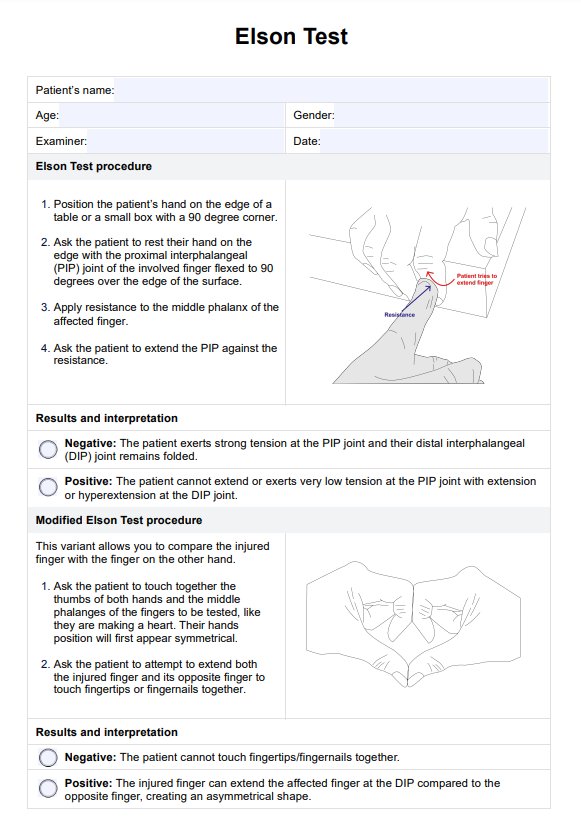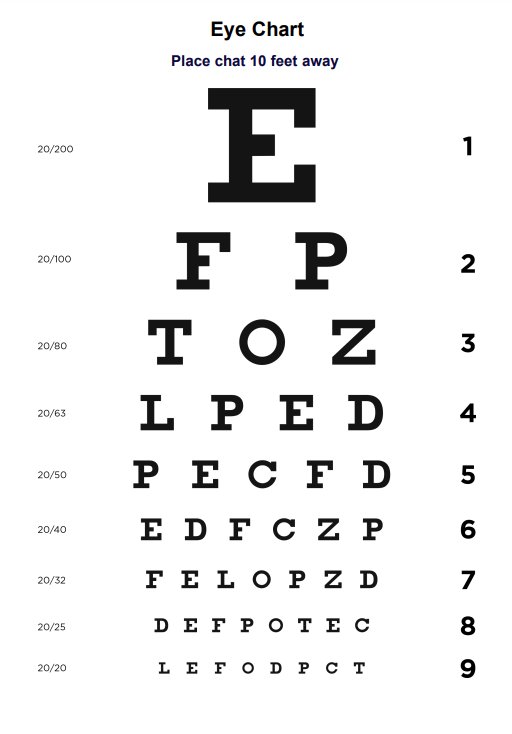Stress
Discover the ease of conducting and tracking Stress Tests with Carepatron's intuitive app. Secure, compliant, and user-friendly for better healthcare.


What is a Stress Test?
A stress test, often called an exercise stress test, is a comprehensive diagnostic procedure specifically designed to evaluate the functionality of your heart under strenuous conditions, typically during physical exertion. This test is critical in assessing your heart's performance when pushed to its maximum capacity, mirroring the increased demand placed on it during exercise.
The process of a stress test involves real-time monitoring of various physiological parameters. These include your heart rhythm, which is tracked to detect any irregularities; your blood pressure, measured to ensure it's within a safe range even during exertion; and your respiratory rate, observed to gauge your overall cardiorespiratory fitness. The exercise component of the test is usually carried out on a treadmill or a stationary bicycle to increase your heart's workload gradually.
One of the key objectives of a stress test is to identify potential issues with blood flow to your heart muscle, which could indicate conditions such as coronary artery disease. It can also help diagnose other heart conditions that may only become apparent when your heart works harder than usual.
Kindly visit our Stress Tests resources for a more extensive understanding of stress tests, including their types, preparation, risks, and what to expect during and after the procedure. This resource provides a comprehensive overview of stress tests, equipping you with the knowledge to understand this essential diagnostic tool better.
Stress Test Template
Stress Test Example
How Does it Work?
A stress test is a systematic process that involves several key steps, each designed to provide detailed insights into how your heart functions under stress. This section gives you a clear understanding of what to expect during this critical diagnostic procedure.
Step 1: Preparation
The preparation phase is crucial to ensure accurate results. You'll be advised to abstain from eating, drinking caffeinated beverages, and smoking for at least 2-3 hours before the test. These activities could affect your heart rate and blood pressure, skewing the test results. Additionally, wearing comfortable clothing and shoes suitable for exercising is recommended. This helps facilitate a comfortable and effective exercise session during the test.
Step 2: Baseline Measurements
Upon your arrival at the testing facility, the medical staff will begin by taking baseline measurements of your heart rate and blood pressure. These initial readings serve as a reference point to compare against the changes observed during and after exercise. Electrodes will be attached to your chest to monitor your heart's electrical activity. These electrodes connect to an electrocardiogram (ECG) machine that records your heart's rhythm and activity throughout the test.
Step 3: Exercise Phase
You'll start exercising slowly on a treadmill or stationary bike. The speed and incline (resistance for bikes) will gradually increase to simulate the effect of walking or running uphill. This progressive increase in intensity pushes your heart to work harder, allowing the team to assess how it responds to stress. Your heart rate, blood pressure, and any symptoms you experience will be continuously monitored and recorded.
Step 4: Recovery Phase
You'll begin the recovery phase once you reach your maximum level of exertion. You'll gradually slow down and stop exercising. However, the monitoring continues. The team will observe how your heart rate and blood pressure return to baseline during this recovery period. Any significant delays or abnormalities in this process can provide crucial information about your heart's health.
Step 5: Result Interpretation
Finally, your doctor will analyze the data collected during the test. They'll interpret your heart's responses to exercise, explore any symptoms you experienced, and discuss the results with you. This interpretation could help diagnose potential heart conditions, guide treatment decisions, and provide recommendations for physical activity levels.
We've created a printable Stress Test that provides an overview of what to expect when undergoing a stress test, helping you prepare effectively for the procedure.
When Would you use this Test?
A stress test is a valuable diagnostic tool in cardiology, with its use often dictated by various clinical scenarios. Understanding when to employ this test can help ensure timely and accurate diagnosis, leading to effective treatment strategies.
One of the most common reasons for conducting a stress test is to identify or confirm the presence of coronary artery disease (CAD). CAD is when the arteries supplying blood to your heart become narrowed or blocked due to plaque build-up. A stress test can reveal signs of CAD, such as decreased blood flow to the heart muscle during exercise.
Stress tests are also frequently used when patients present with symptoms that suggest possible heart problems. These symptoms may include chest pain (angina), shortness of breath, unusual fatigue, dizziness, or an irregular heartbeat. While various conditions can cause these symptoms, a stress test helps determine if they're related to heart disease.
In addition to diagnosing heart conditions, stress tests are vital in determining safe levels of physical activity, especially for people with known heart disease or those recovering from heart-related events or procedures. For instance, if you've recently had a heart attack or undergone heart surgery, a stress test can guide your healthcare provider in developing an appropriate and safe exercise program for your rehabilitation.
Moreover, stress tests are sometimes used to assess the effectiveness of heart treatments such as medications, angioplasty, or bypass surgery. Doctors can gauge how well the treatment works by comparing the results of stress tests conducted before and after these interventions.
Finally, in some cases, stress tests may be used as a preventative or screening tool. For individuals with multiple risk factors for heart disease, such as smoking, high cholesterol, high blood pressure, diabetes, or a family history of heart disease, a stress test can provide information about the heart's response to exercise and identify early signs of heart disease.
The use of a stress test extends beyond mere diagnosis. It plays a multifaceted role in managing heart health, guiding treatment decisions, planning rehabilitation programs, evaluating treatment efficacy, and assisting in preventative care. As always, the decision to conduct a stress test should be based on individual circumstances and in consultation with a healthcare provider.
What do the Results Mean?
Interpreting the results of a stress test involves a nuanced understanding of various factors. The results can provide vital information about your heart's health, guide treatment strategies, and predict potential heart-related events.
A normal stress test result is generally a positive sign. It suggests that your heart responds appropriately to the increased demand for oxygen during physical exertion, indicating a low likelihood of significant coronary artery disease. In other words, a normal result means an adequate blood supply to your heart muscle during exercise, and your heart rhythm remains stable.
However, a normal result does not entirely rule out the presence of heart disease. Some patients may still have significant heart disease even with a normal stress test result, especially if they have other risk factors such as high cholesterol, diabetes, or a family history of heart disease. Thus, it's crucial to consider these results within the broader context of your overall health status and risk profile.
On the other hand, an abnormal stress test result could suggest a higher risk of heart disease. This might be due to irregular heart rhythms or changes in your electrocardiogram.
An abnormal result could also indicate that the blood supply to your heart muscle is inadequate under stress, which may be a sign of blockages in the coronary arteries.
It's important to note that an abnormal result does not automatically mean you have a heart condition. Further diagnostic testing may be needed to confirm a diagnosis. These might include imaging stress tests, which provide more detailed pictures of the heart, or invasive tests like coronary angiography.
In some cases, the stress test results may be inconclusive. This can happen if, for example, you're unable to complete the exercise portion of the test due to fatigue, shortness of breath, or other non-cardiac issues. In such cases, your doctor may suggest alternative tests or methods to assess your heart's health.
Stress test results are critical to cardiac evaluation but should be considered part of the broader clinical picture. Discussing your results with your healthcare provider for a comprehensive understanding is always important.
Research & Evidence
Stress tests as a diagnostic tool have a rich history dating back to the early 20th century. Over the decades, advancements in technology and medical research have greatly improved the accuracy and utility of these tests, solidifying their place in modern cardiology.
Numerous studies have underscored the value of stress tests in diagnosing heart conditions such as coronary artery disease (CAD). For instance, a systematic review and meta-analysis highlighted the diagnostic accuracy of exercise stress testing for CAD, indicating that it offers a non-invasive method of diagnosis and, in some cases, may even negate the need for angiography (Cohn, 2012).
Further evidence supports the use of stress tests from research involving dobutamine stress testing. This stress test was a useful diagnostic tool for identifying reduced adrenergic myocardial contractile reserve in asymptomatic or mildly symptomatic patients with dilated cardiomyopathy (Bergmann, 2008).
Stress tests have also been proven effective in evaluating conditions like long QT syndrome. A study demonstrated the diagnostic utility of recovery phase QTc during treadmill exercise stress testing in evaluating this condition (Lombardi, 2011).
Moreover, stress tests have been employed to detect myocardial ischemia induced during mental stress tests—an innovative approach demonstrating the versatility of this diagnostic tool (Deanfield, 2004).
Finally, recent advancements in machine learning and artificial intelligence have opened new avenues for optimizing stress test usage. A deep learning model was developed to predict exercise stress test results, providing an effective tool to optimize diagnostic test selection and reduce wastage in suspected coronary artery disease (Liu, 2023).
Extensive research and evidence supports using stress tests in various clinical scenarios, from diagnosing heart diseases to guiding treatment plans and even assisting in preventive measures.
References
- Bergmann, S. R. (2008). Dobutamine stress testing as a diagnostic tool for evaluation of myocardial contractile reserve in asymptomatic or mildly symptomatic patients with dilated cardiomyopathy. Journal of the American College of Cardiology, 51(23), 2276-2282.
- Cohn, J. N. (2012). Diagnostic accuracy of exercise stress testing for coronary artery disease: a systematic review and meta‐analysis of prospective studies. International Journal of Clinical Practice, 66(5), 477-492.
- Deanfield, J. (2004). Peripheral arterial tonometry: a diagnostic method for detection of myocardial ischemia induced during mental stress tests: a pilot study. Clinical Cardiology, 27(3), 137-141.
- Lombardi, F. (2011). The diagnostic utility of recovery phase QTc during treadmill exercise stress testing in the evaluation of long QT syndrome. Journal of the American College of Cardiology, 58(16), 1695-1701.
- Liu, Y. (2023). Deep learning model to predict exercise stress test results: Optimizing the diagnostic test selection strategy and reduce wastage in suspected coronary artery disease. Computers in Biology and Medicine, 128, 104139.
Commonly asked questions
Doctors usually request a stress test if they suspect a patient has coronary artery disease or another heart condition.
Stress tests are used to diagnose heart conditions, guide treatment decisions, determine safe levels of exercise, and predict future heart-related events.
Stress tests involve exercising on a treadmill or stationary bike while your heart activity is monitored.

.jpg)

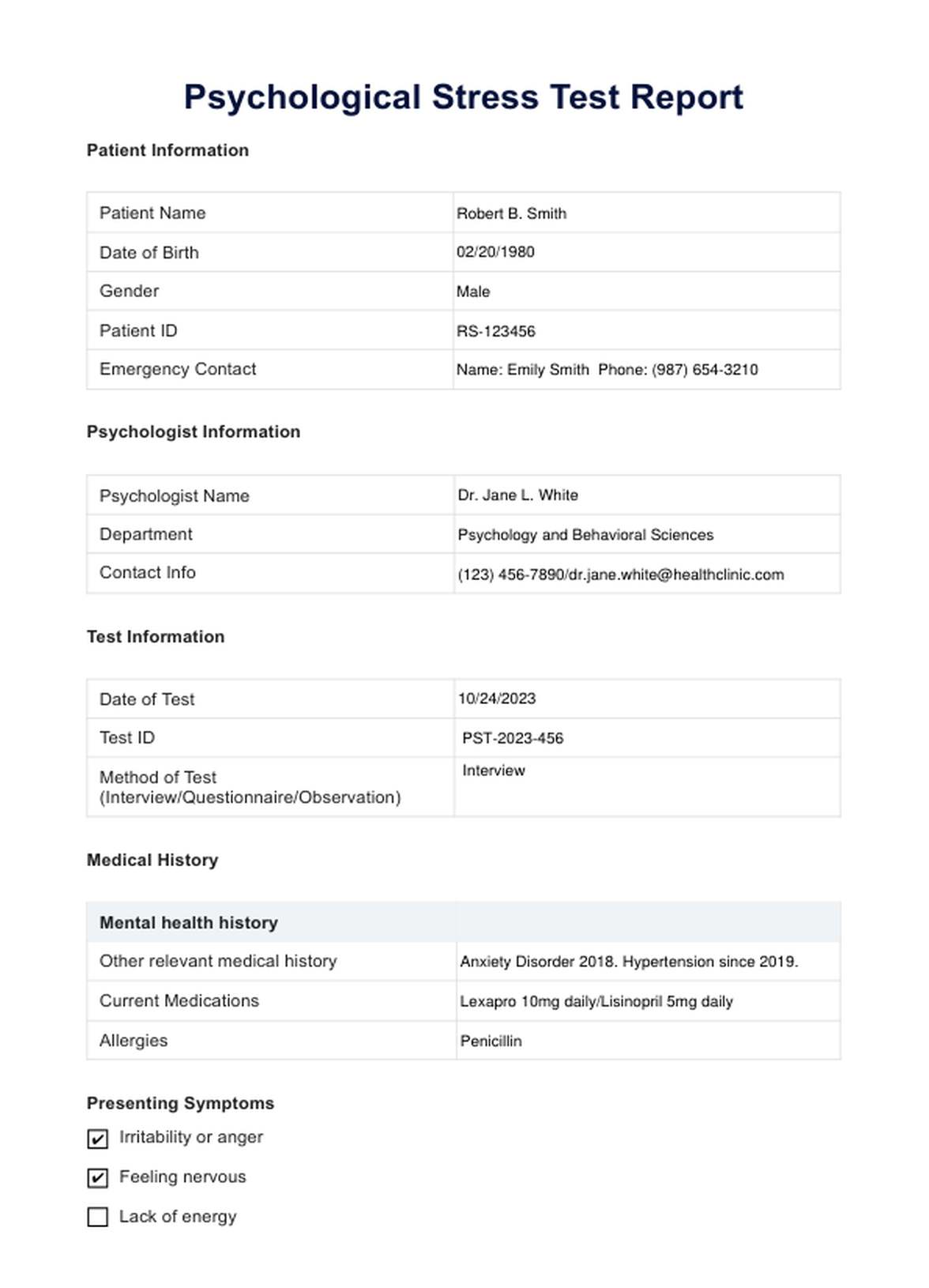

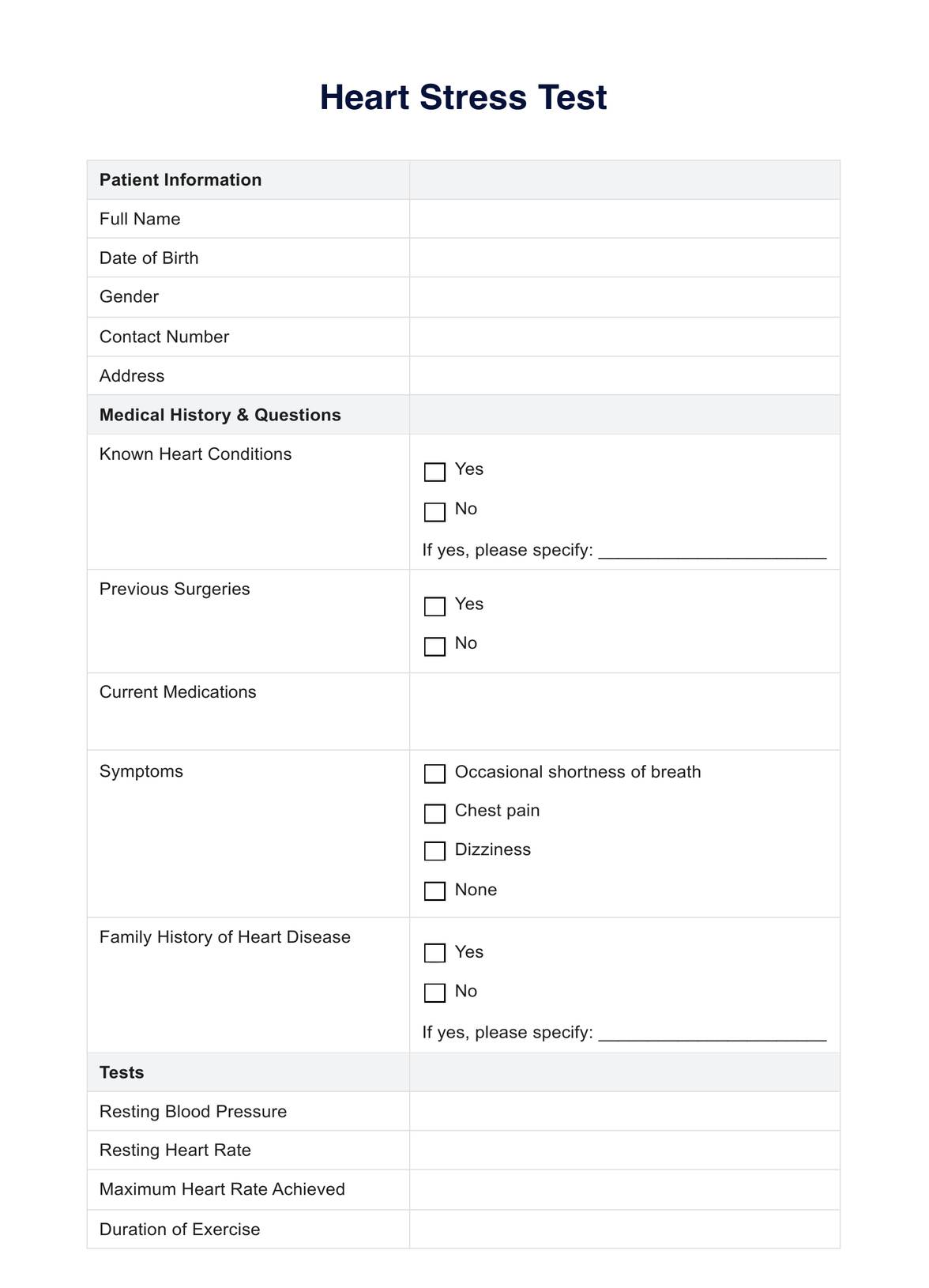

















-template.jpg)

















































































